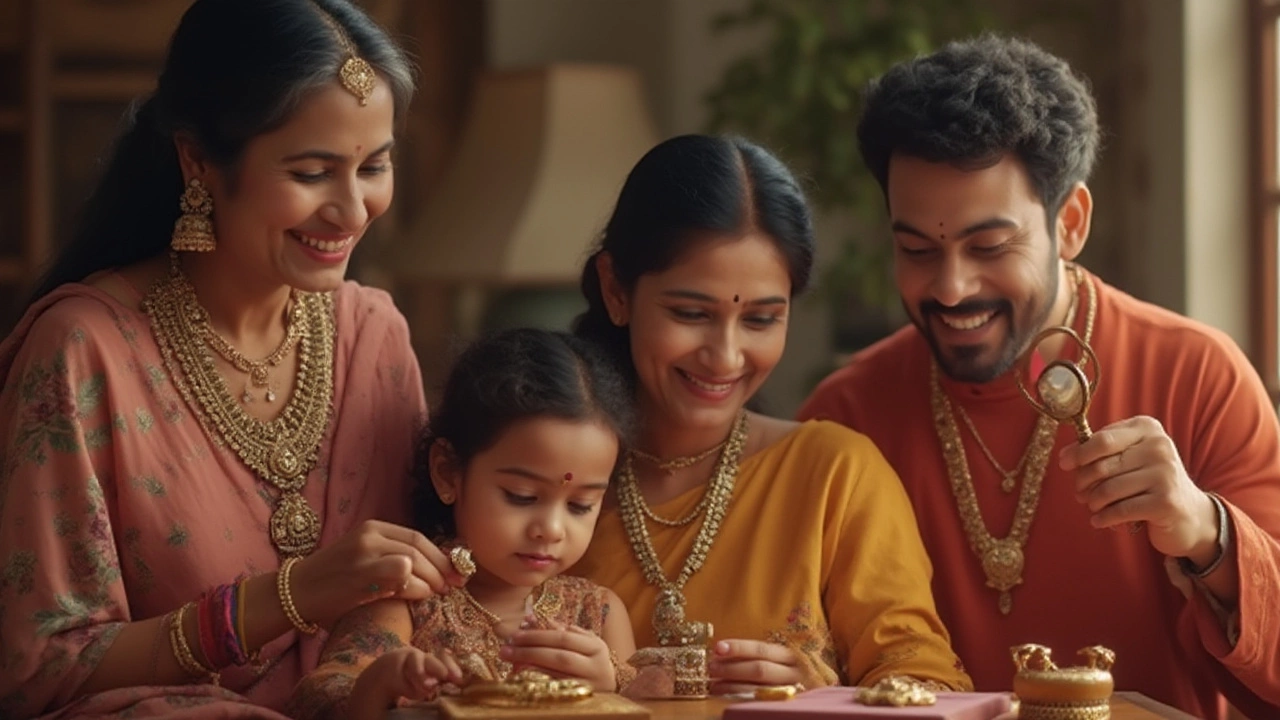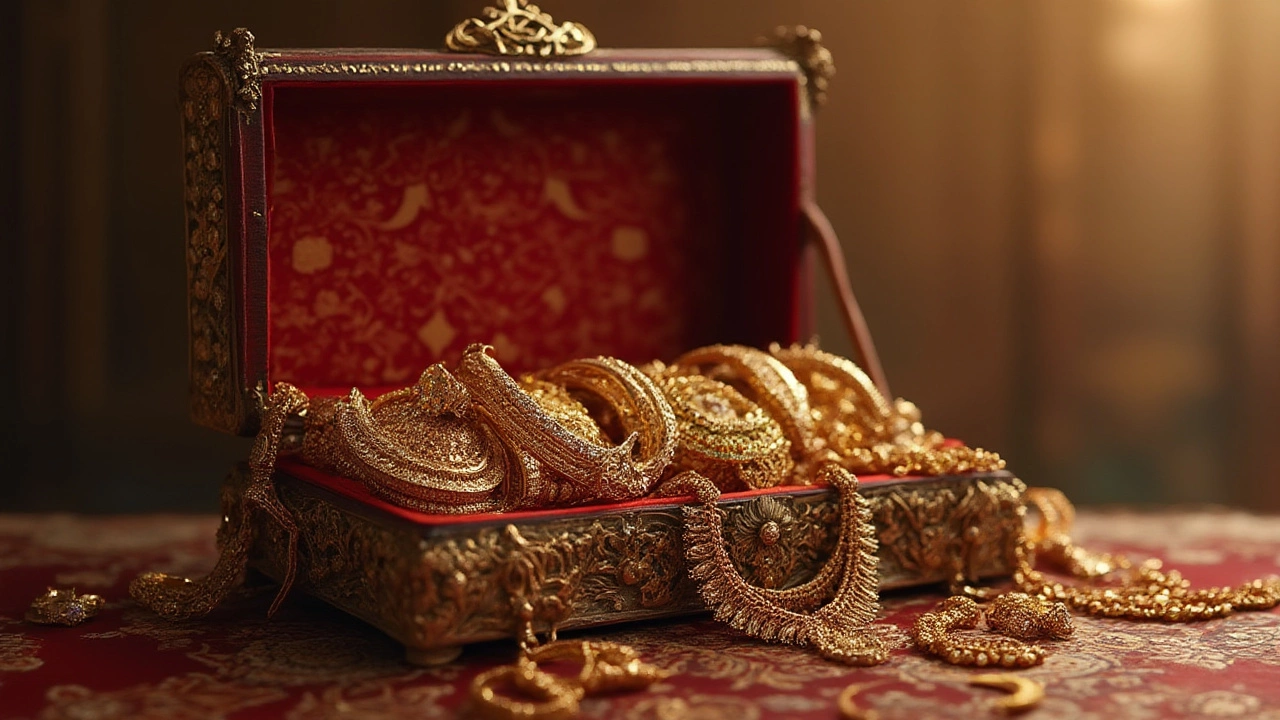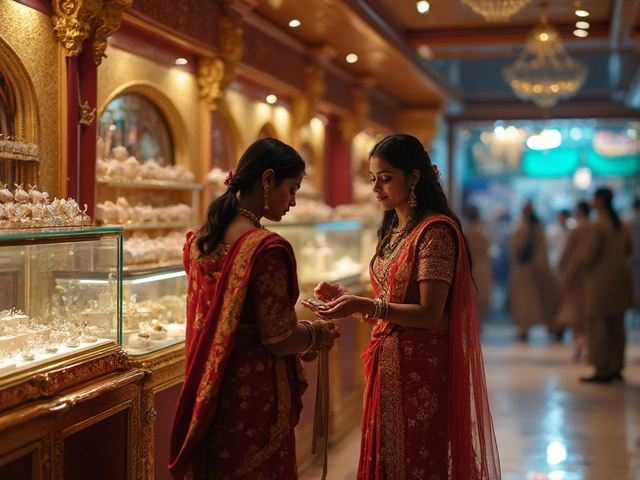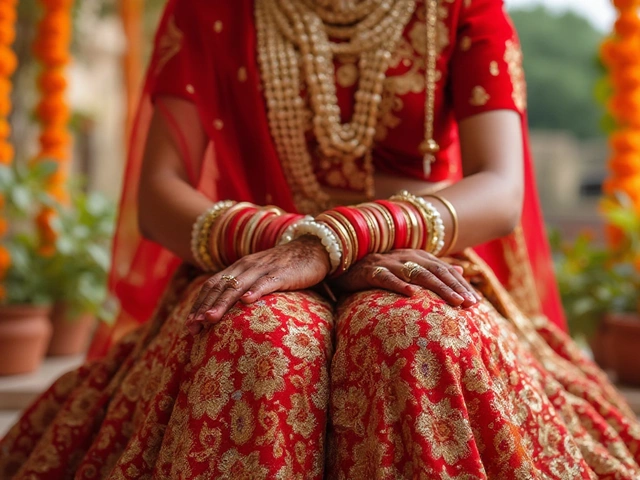You’d be amazed how many people think of jewelry purely as fashion, a little sparkle to match their mood. Yet, tucked away in drawers everywhere, there are pieces quietly getting more valuable. Some earrings or necklaces become a safety net—insurance for a rainy day, or a potential family heirloom. Here’s a stat that snaps you to attention: Since 2000, gold prices have climbed over 500%. While the last global financial shakeup made stocks wobbly, the price of gold jewelry kept surging. Maybe you’re eyeing that dusty wedding chain from your grandmother. Is it worth keeping? Or maybe you want to buy smart, picking jewels that’ll hold their shine years from now. So, what jewelry actually goes up in value? Let’s get hands-on without the fluff.
The Allure of Gold: Classic and Driven by the Market
Gold almost always tops the list when people talk about valuable jewelry. Why? This shiny metal has been treasured for thousands of years—literally since humans began recording history. Some museums in India still display gold earrings and bangles dating back 5,000 years! Today, its value is a blend of tradition and hard numbers: gold is globally traded, its price set daily in the world’s financial capitals. That’s what gives gold jewelry a solid spot as an investment you can touch, wear, and pass on.
Let’s get practical. If you own a traditional 22-karat gold bangle, its worth is directly tied to the price of gold per gram. For example, gold prices in India hovered around Rs 4,500 per gram in 2020; by mid-2025, they sometimes touched Rs 7,300 per gram. Unlike trendy fashion jewelry, gold pieces rarely drop in value—unless they’re badly damaged or come with heavy making charges. In tough times, my family, like many others, bought gold during festivals or weddings. Years ago, my son Tanish couldn’t believe it when he heard stories about old gold coins being cashed in for house down-payments.
It doesn’t end there. Pure gold (24K) is actually a bit too soft for daily wear—jewelers prefer 18K or 22K for most jewelry, giving a good balance of durability and high value. In urban India, 22K reigns supreme for chains, bangles, and heavy wedding necklaces. The resale market for these items is liquid and active. A reputable jeweler will weigh your gold, subtract a tiny fraction, and write you a check right on the spot. Some even take back their own jewelry with full buyback value, barring a small charge for melting or labor.
Gold’s value isn’t just about the metal. Antique gold jewelry, with unique handmade designs or old hallmarks, can fetch a premium. Collectors and antique dealers snap these up for prices well above the day’s bullion rate. These items sometimes escape the melting pot, becoming treasures that are as much about artistry as raw material.
For ease of comparison, here’s a table showing how gold price trends have stacked up against the Indian stock market and real estate over the past decade:
| Year | Gold Price per Gram (INR) | Sensex (Index) | Avg. Real Estate (per sq. ft.) |
|---|---|---|---|
| 2015 | 2,650 | 26,000 | 5,200 |
| 2020 | 4,500 | 41,000 | 6,500 |
| 2025 | 7,300 | 76,000 | 7,000 |
The numbers speak for themselves. Gold jewelry isn’t just a pretty thing. For millions, it’s reserve wealth that has outpaced inflation, beating both property and most investments.
Diamonds: A Game of Quality & Rarity
Diamonds have a reputation for sparkle and love stories—engagement rings, wedding anniversaries, that sort of thing. But are they really a good bet if you want value to appreciate? The answer is, it depends. Only some diamonds—not every ring or little earring—go up in value. Think big, high-grade stones with rare color and clarity, the type you read about in auction news. If you bought a one-carat D-flawless diamond five years ago, you’d be smiling today. Lesser stones, especially with average color and lots of inclusions, are much tougher to sell for a profit. And don’t get me started on mass-produced, machine-cut diamond pieces—they look nice but rarely become future treasures.
The value of a diamond hinges on what the industry labels as the “Four Cs”: Carat, Cut, Clarity, and Color. Here’s the kicker: For investment, only stones with high grades in all four really shine. Certified diamonds—especially those with GIA (Gemological Institute of America) certification—hold the most appeal, both in retail and resale. When my cousin bought her two-carat solitaire, it came with the full paperwork. Her local jeweler offered to buy it back at almost 90% of the invoice value just a few years later! That’s rare for jewelry—papers matter as much as the stone.
On the other hand, many standard stones lose value quickly after purchase. Retail jewelers add a big markup, and reselling these smaller, commercial-grade diamonds often means accepting a much lower price. That’s why, if you want diamonds to be an asset—not just eye candy—stick to classic shapes (round, princess), go for certification, and avoid “treated” or “lab-grown” stones. Lab diamonds may be great for ethical reasons but don’t expect their value to rise—they’re more like electronic gadgets, quickly outdated by better tech.
A fascinating fact: The world’s most expensive diamond—the Pink Star—sold for over $71 million at auction. These prices make headlines, but for ordinary folks, the best bet is a GIA-certified one-carat diamond with a D-F color, VS1 clarity, and excellent cut. According to data from Rapaport (the diamond price bible), prices for top-grade diamonds rose 15-20% between 2018 and 2024, even while average-quality stones flatlined or fell.
- Buy only certified stones.
- Stick to classic cuts—round, princess, oval.
- Big, clear, colorless diamonds stay in demand and hold value best.
A diamond can dazzle and deliver value—if you know what you’re looking for. Avoiding mass-market pieces is the first step. Look for documentation and keep it safe, as future buyers will always want proof.

Vintage and Designer Pieces: Demand Drives Value Upwards
There’s a whole world of jewelry whose price has little to do with melting weight or stone size. In fact, some vintage or iconic designer pieces sell for jaw-dropping sums just because of their story, rarity, or maker. Look at brands like Cartier, Tiffany, or Bvlgari. A Chanel vintage brooch from the 1980s regularly fetches double or triple its price when sold today—if kept in great shape and with the original box. Numbers from Sotheby’s show that rare jewelry by world-famous designers can outpace gold or diamonds for growth, often jumping 10-15% in value each year.
But it isn’t just big-ticket brands. Traditional Indian jewelry styles—think temple jewelry from Tamil Nadu or ornate Polki sets from Rajasthan—have caught the eye of collectors worldwide. Have you ever rummaged through your grandma’s gold trunk? You might find a heavy coin necklace, a Nizami-style kada, or a chunky, old navratna ring. In the right auction, these pieces sometimes fetch double their scrap value. Why? Styles that are out of production, made with hand techniques no one uses now, become rare art. Antique jewelry dealers estimate in India alone, the collectible jewelry market has grown over 30% in the past decade as vintage tastes surge. The best part? Even broken, a piece with an original maker’s mark or a famous design can still be repaired by experts, restoring much of its value.
Here are some tips for spotting a future collectible:
- Look for hallmarks or maker’s stamps (Cartier, Tiffany, Senco, CKC from India—these matter!)
- Unique, hard-to-replicate designs with a clear vintage era are winners.
- Original boxes, receipts, and photos of family wearing the piece all add context and value.
Boutique Indian jewelers, like Amrapali, are now seeing their 1990s gold and Kundan sets make a comeback, with some customers selling for 3-4x what they paid. Who knew your old engagement nose pin could be a trending auction piece?
When Jewelry’s Value Surprises: Tips, Trends, and Pitfalls
So, if you’re thinking of buying new jewelry with an eye on future value, or debating whether to keep something handed down, a few hard-learned lessons can help. First, steer clear of fashion jewelry made from base metals or synthetic stones—they might wow at parties but don’t expect them to pay for your child’s college fee later. Even big-name silver jewelry rarely appreciates; sterling’s price is just too unpredictable, and designs go out of style fast. The exception? Some antique silver temple pieces or tribal necklaces, which, because of rarity, can become sought after by collectors.
Another common mistake is falling for heavy “making charges.” When you buy a new gold necklace, often nearly 10-20% of the price is labor, not material. This charge is gone if you try to resell—meaning your resale is mostly determined by the raw metal’s value. Always ask about buyback terms before you buy. Keep all paperwork; for diamonds, make sure you have the certificate. For gold, a BIS hallmark is crucial in India. No hallmark or certificate? The jeweler will pay much less when you sell.
Be wary of trends—rose gold had its moment, but traditional yellow gold always holds better in Asian markets. Oversized statement pieces can go out of fashion, losing buyers. If you want steady value growth, stick with classic, timeless designs—a simple gold chain, a diamond solitaire, a vintage bangle. These are always in demand at pawnshops and with buyers.
Watch global trends too. Demand in China and India often impacts gold prices, especially during wedding and festival seasons. Economic swings, currency rates, and even social trends (like minimalism) push jewelry preferences up and down. Recently, younger buyers are showing renewed interest in sustainability and vintage, pushing up prices for recycled or upcycled gold and diamonds.
If you’re planning to buy jewelry as an investment, treat it like one. Research before you buy. Track price trends online—sites like GoldPrice.org and Rapaport for diamonds make it easy. Compare prices at multiple jewelers. When I bought a gold chain for Tanish, the spread between the best and worst quotes was over 10%! It pays—literally—to be informed. For vintage pieces, auctions can sometimes unlock amazing value, but online resale sites also work well if you can document authenticity.
Lastly, recognize that jewelry can have “invisible” value, too. Heirlooms carry stories and legacy. Passing down a necklace or a set of bangles isn’t just a transaction—it’s a way to keep a sense of belonging and history alive in your family. Sometimes, that’s worth more than gold.
So next time you open your jewelry box, don’t just see a shiny trinket—imagine what it could mean years down the road. Smart choices in gold, top-grade diamonds, and distinguished vintage designs can create joy now and wealth later. That’s the magic of jewelry that goes up in value.



